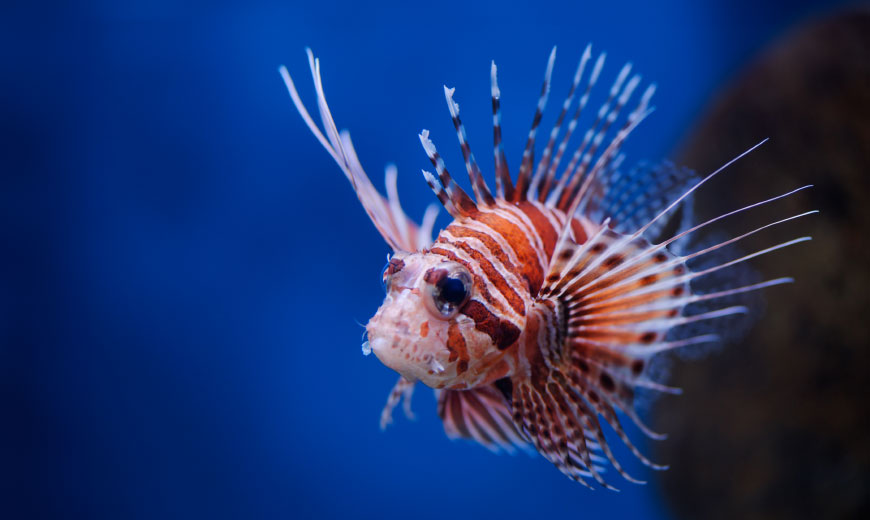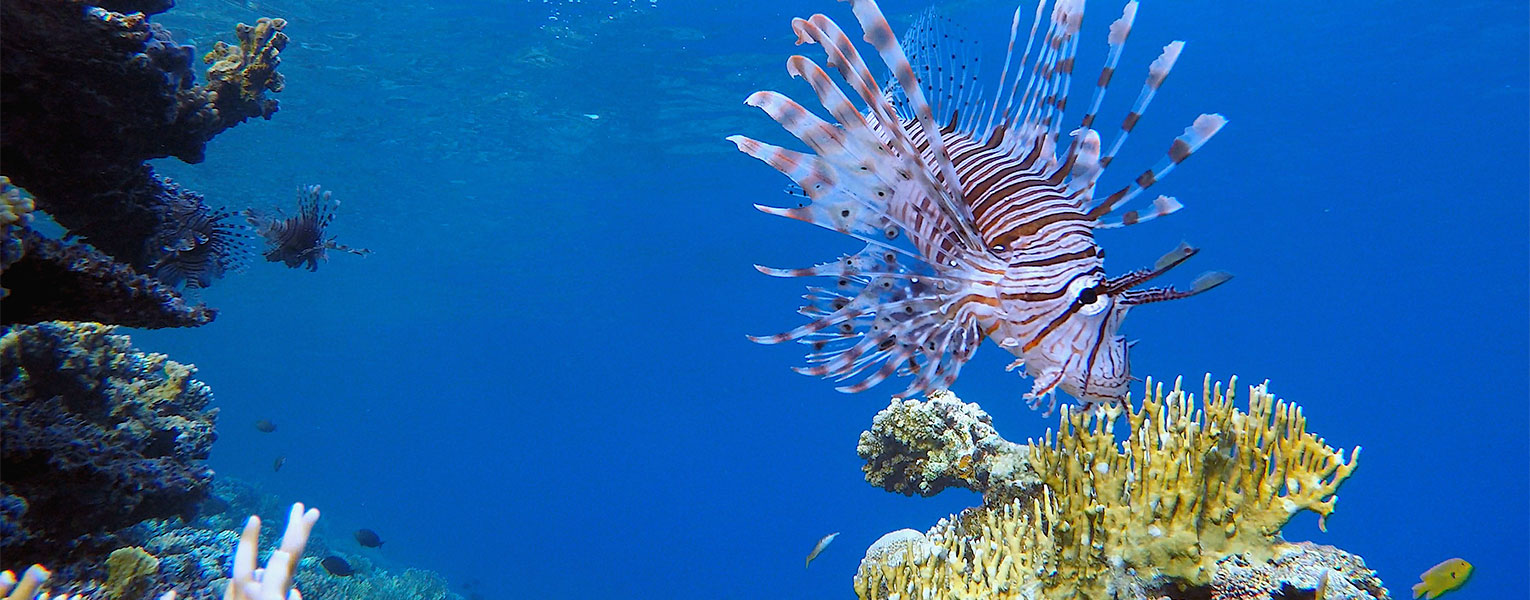4/10/2024
Science in Seconds: Small Fish, Big Problem
How Lionfish Spines Impact Potential Predators
By Bethany Augliere
Adorned with 18 venomous spines, the pervasive and invasive red lionfish wreaks havoc on the local environment in South Florida. They have no natural predators, a voracious appetite and the ability to release up to 30,000 eggs every four days. So, what would happen if animals like sharks and groupers started eating them?
“Lionfish are here to stay, and I wanted to know if they actually damage these predators, if they were to start consuming them," said Katherine Galloway, Ph.D., a biology doctoral student at the time of this study, who has since graduated FAU. Galloway was working with Marianne Porter, Ph.D., senior author on the study and associate professor in the Charles E. Schmidt College of Science. The two published their research findings in the Journal Integrative Organismal Biology testing of how lionfish spines puncture the skin and mouths of their possible predators — including the human skin, because of the incidence of human injury due to lionfish encounters during water sports, using pig skin as a model.
“Many studies focus on one animal or material, but out in the world, there are interactions," Porter said. “It is thought that lionfish spines are useful for defense, and it makes sense to test them in a way that is biologically relevant." And in terms of predators, it may just be that the shark is a better option than groupers, added Porter, because they’re less likely to get injured.
Galloway collected dead lionfish from fishers and local derbies in South Florida, which is a single day competition to collect and remove as many lionfish as possible. Since lionfish are invasive, no permit is required for fishing this species in the state of Florida, “so it’s not difficult to get them," Galloway said. She got grouper heads from fish markets and the blacktip sharks from the National Oceanic and Atmospheric Administration (NOAA) Fisheries.
Then, she removed specific spines from different regions of the body — the dorsal, pelvic and anal spines — to test puncture performance on three different regions around the mouths of sharks and groupers. She found that all lionfish spines were able to puncture grouper skin. “The grouper skin was pretty easy to puncture," said Galloway, which she thinks is due to its mucus membranes. But, the spines couldn’t puncture the outer skin of shark mouths, likely due to the dermal denticles, she said, which are tough scales that cover the shark’s skin.
As far as damage to the lionfish spines, the dorsal and anal fins incurred the most damage but the stiff pelvic spines had the least damage. Potentially, this means the pelvic fin spines are mostly for protection of their vital organs, like reproductive organs, while the long dorsal fin spines are likely for intimidation, Galloway said.
“Prior to my research, we knew that lionfish had spines. We didn't really know if all spines function in the same manner or why this one species has such exaggerated spines," Galloway said. “This work starts to help pick apart what makes an invasive species so successful, in terms of their body plans, and why they have evolved so many different spines."
If you would like more information, please contact us at dorcommunications@fau.edu.
Venomous Beauties Cause Chaos

Marianne Porter, Ph.D.
College
Watch video
